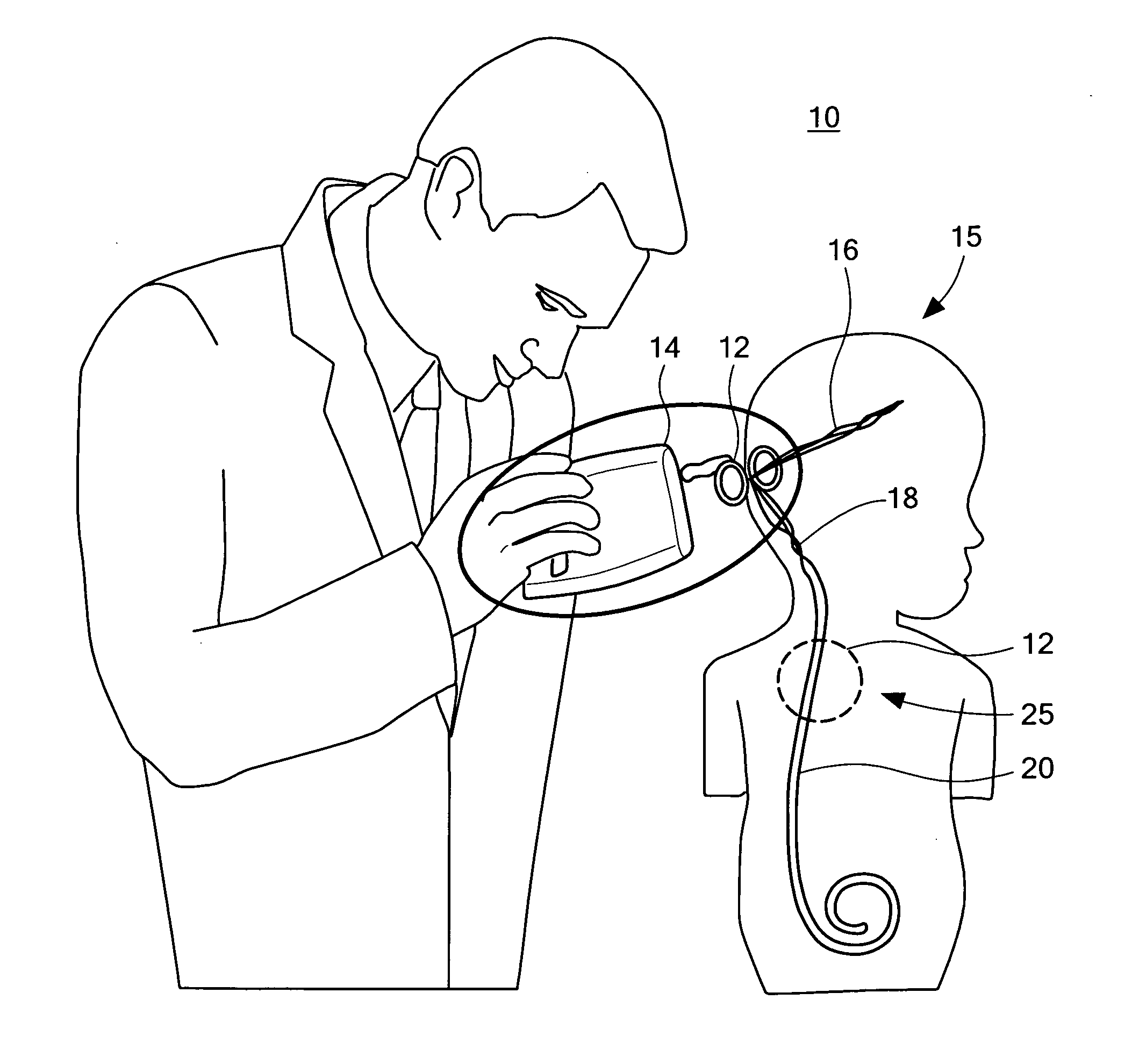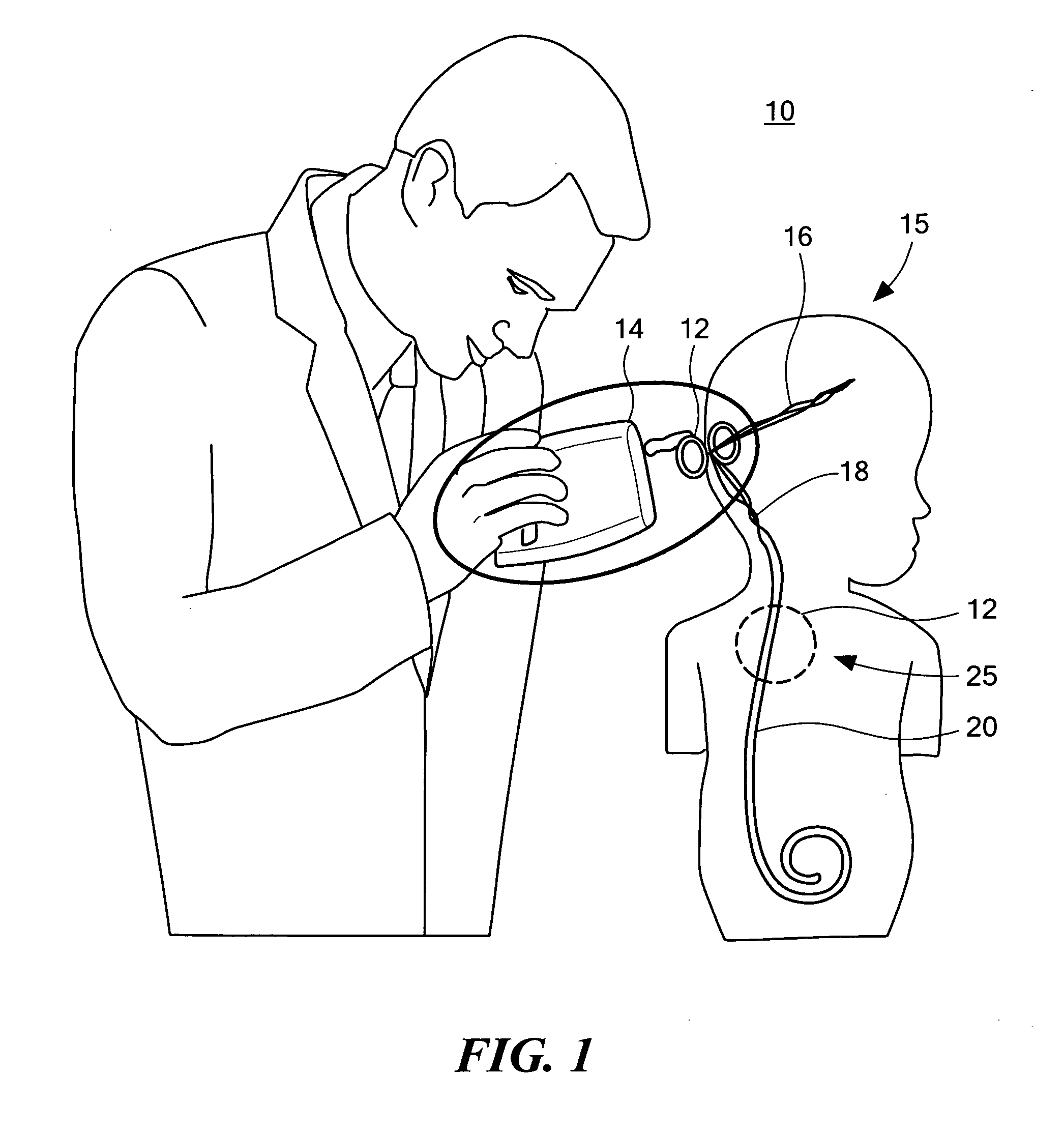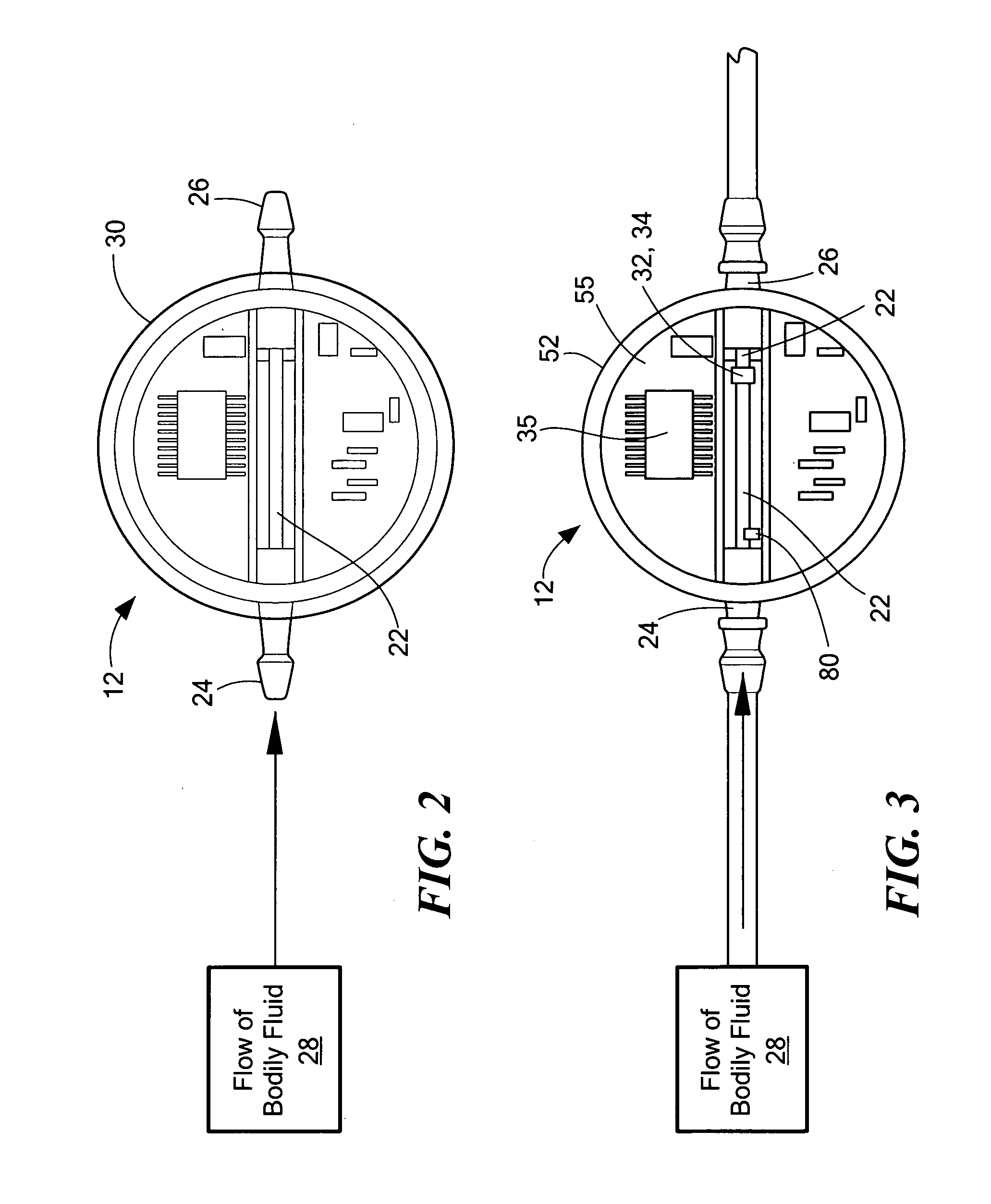Flow rate sensor system and method for non-invasively measuring the flow rate of a bodily fluid
a flow rate sensor and flow rate technology, applied in temperature sensors, intracranial pressure measurement, medical science, etc., can solve the problems of inability to provide quantitative flow rate measurement, inability to demonstrate in humans the capability of providing reliable and accurate quantitative information on shunt function, and common shunt failure, etc., to achieve sufficient inductive coupling and minimize the length of time
- Summary
- Abstract
- Description
- Claims
- Application Information
AI Technical Summary
Benefits of technology
Problems solved by technology
Method used
Image
Examples
Embodiment Construction
[0050]Aside from the preferred embodiment or embodiments disclosed below, this invention is capable of other embodiments and of being practiced or being carried out in various ways. Thus, it is to be understood that the invention is not limited in its application to the details of construction and the arrangements of components set forth in the following description or illustrated in the drawings. If only one embodiment is described herein, the claims hereof are not to be limited to that embodiment. Moreover, the claims hereof are not to be read restrictively unless there is clear and convincing evidence manifesting a certain exclusion, restriction, or disclaimer.
[0051]There is shown in FIG. 1 one embodiment of system 10 and the method thereof for non-invasively measuring the flow rate of a bodily fluid. System 10 includes encapsulated implant 12 and external device 14. In the example shown in FIG. 1, encapsulated implant 12 is implanted into human body 15 and is coupled to ventricu...
PUM
 Login to View More
Login to View More Abstract
Description
Claims
Application Information
 Login to View More
Login to View More - R&D
- Intellectual Property
- Life Sciences
- Materials
- Tech Scout
- Unparalleled Data Quality
- Higher Quality Content
- 60% Fewer Hallucinations
Browse by: Latest US Patents, China's latest patents, Technical Efficacy Thesaurus, Application Domain, Technology Topic, Popular Technical Reports.
© 2025 PatSnap. All rights reserved.Legal|Privacy policy|Modern Slavery Act Transparency Statement|Sitemap|About US| Contact US: help@patsnap.com



